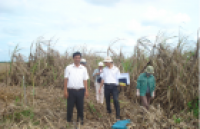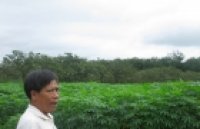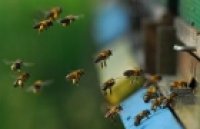| Transposon insertions within alleles of BnaFT.A2 are associated with seasonal crop type in rapeseed |
|
Florigen, encoded by FLOWERING LOCUS T (FT), plays key roles not only as a flowering hormone, but also a universal growth factor affecting several aspects of plant architecture. In rapeseed, BnaFT.A2 has been revealed as one of the major loci associated with flowering time and different ecotypes. However, it is unclear how allelic variations of BnaFT.A2 affect its function in flowering time regulation and beyond. |
|
Qingdong Jin, Gengdong Gao, Chaocheng Guo, Taihua Yang, Ge Li, Jurong Song, Na Zheng, Shuai Yin, Licong Yi, Zhen Li, Xianhong Ge, Graham J. King, Jing Wang & Guangsheng Zhou Theoretical and Applied Genetics October 2022; vol. 135: 3469–3483 Key messageWe identified two new transposon insertions within the promoter of BnaFT.A2 in addition to an existing 288 bp MITE within the second intron. Each insertion event corresponds to a distinct BnaFT.A2 haplotype and is closely associated with established crop seasonal ecotypes. AbstractFlorigen, encoded by FLOWERING LOCUS T (FT), plays key roles not only as a flowering hormone, but also a universal growth factor affecting several aspects of plant architecture. In rapeseed, BnaFT.A2 has been revealed as one of the major loci associated with flowering time and different ecotypes. However, it is unclear how allelic variations of BnaFT.A2 affect its function in flowering time regulation and beyond. In this study, we confirmed an existing 288 bp miniature inverted-repeat transposable element (MITE) insertion within the second intron and identified two new insertions within the promoter of BnaFT.A2—a 3971 bp CACTA and a 1079 bp Helitron. Each insertion event corresponds to a distinct BnaFT.A2 haplotype and is closely associated with established crop seasonal ecotypes. These alleles have similar tissue-specific expression patterns but discrete transcriptional patterns tightly associated with rapeseed flowering time and ecotype. RNAi lines and mutants of BnaFT.A2 flowered significantly later than controls. Differentially expressed genes (DEGs), identified in transcriptomic profiling of seedling leaves from two loss-of-function mutants (Bnaft.a2-L1 and Bnaft.a2-L2) compared with controls, indicated significant enrichment for hormone metabolic genes and roles related to plant cell wall synthesis and photosynthesis. Plants with loss-of-function BnaFT.A2 had smaller leaves and lower net photosynthetic rate compared to controls. These findings not only further clarify the genetic basis of flowering time variation and ecotype formation in B. napus, but also provide an additional toolbox for genetic improvement of seasonal adaptation and production.
See https://link.springer.com/article/10.1007/s00122-022-04193-x |
|
|
|
[ Tin tức liên quan ]___________________________________________________
|


 Curently online :
Curently online :
 Total visitors :
Total visitors :


